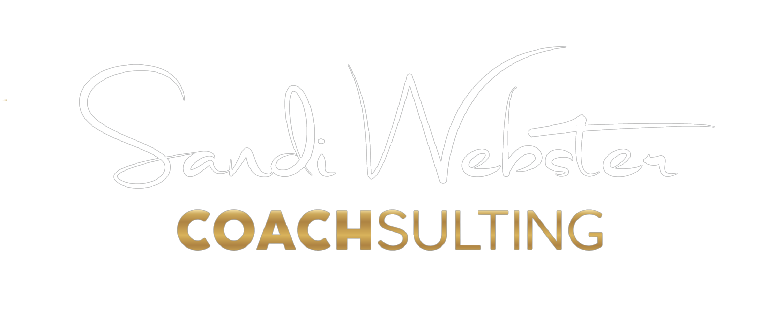The Tortoise’s Dilemma: Conquering Slow Organic Growth in a Hare’s World
In the fast-paced business world, where rapid growth and instant success often take the spotlight, it’s easy for slow organic growth to feel like a setback. But what exactly is slow organic growth, and why is it crucial to understand its dynamics? In this article, we’ll delve into the nuances of prolonged growth periods, explore their challenges, and offer strategies for overcoming them.

Understanding the Nature of Industries with Naturally Prolonged Growth Periods
Industries such as agriculture and real estate are prime examples of sectors known for their slow growth trajectories. Unlike tech startups that can experience exponential growth quickly, these industries often operate at a more measured pace.
Several factors contribute to the prolonged growth periods experienced in such industries. Market saturation, regulatory hurdles, technological advancements, economic cycles, and shifting consumer behavior trends all play significant roles in shaping the pace of growth.
Challenges Faced in Slow Organic Business Growth
Patience vs. Impatience: The Psychological Battle
One of the most significant challenges in navigating slow organic growth is the psychological battle between patience and impatience. While it’s natural to crave immediate results, understanding and accepting the inherent timeline of organic growth is crucial for long-term success.
Resource Allocation Dilemma
Allocating resources effectively becomes a delicate balancing act in slow-growth environments. Financial constraints, limited human resources, and managing time efficiently pose significant hurdles.
Competing in a Fast-Paced Market
Maintaining competitiveness can be daunting in industries dominated by rapid growth and innovation. Balancing agility with stability and innovation with tradition becomes essential for survival.
Maintaining Motivation and Morale
Sustaining motivation and morale during prolonged growth periods can be particularly challenging. Leaders must navigate leadership challenges and prioritize employee engagement to keep the team motivated and focused on long-term goals.
Strategies for Overcoming Slow Organic Growth Challenges
Navigating the challenges of slow organic growth requires a proactive approach and a willingness to embrace change. Here’s an in-depth exploration of strategies to overcome these hurdles:
Cultivating a Long-Term Vision
Setting Realistic Milestones
Instead of fixating on distant, unrealistic goals, businesses should break down their vision into achievable milestones. These milestones serve as guideposts along the journey, providing a sense of progress and momentum. By setting realistic milestones, businesses can maintain motivation and focus while avoiding the pitfalls of unrealistic expectations.
For example, a real estate development company aiming to expand into new markets might set milestones such as acquiring a certain number of properties within a specified timeframe or securing permits for a new development project. These milestones provide tangible targets that can be measured and celebrated, keeping the team engaged and motivated.
Flexibility in Adaptation
While staying committed to long-term goals is essential, businesses must also remain open to adaptation. The landscape of slow organic growth is inherently unpredictable, and strategies that were effective yesterday may no longer be viable tomorrow. By maintaining flexibility in adaptation, businesses can pivot quickly in response to changing market conditions or emerging opportunities.
Flexibility might involve adjusting strategies, reallocating resources, or revisiting long-held assumptions. For example, a traditional brick-and-mortar retailer facing declining foot traffic might pivot to e-commerce to reach a broader audience. The retailer can sustain growth in an evolving market landscape by embracing technological innovation and adapting to shifting consumer preferences.
Leveraging Technology and Innovation
Process Optimization
One of the most effective ways to leverage technology is through process optimization. Businesses can streamline operations, reduce costs, and improve productivity by identifying inefficiencies and bottlenecks in existing workflows. Solutions might involve implementing automation software to simplify repetitive tasks, adopting project management tools to enhance collaboration, or integrating data analytics to gain insights into customer behavior.
Product Diversification
Another strategy for stimulating growth in slow-growth industries is product diversification. By expanding their range of offerings, businesses can appeal to a broader customer base and capitalize on emerging trends. Expansion might involve developing new products or services that complement existing offerings, entering new market segments, or exploring innovative solutions to address customer needs.
Building Strategic Partnerships and Alliances
Collaborative Ventures
Joint ventures and collaborative projects allow businesses to leverage each other’s strengths and pursue opportunities that may be out of reach individually. By combining resources and expertise, companies can undertake more extensive projects, mitigate risks, and achieve economies of scale.
For example, a manufacturing company experiencing production delays might invest in software that monitors equipment performance in real time, allowing for proactive maintenance and minimizing downtime. The company can improve efficiency and meet customer demand more effectively by optimizing its production processes.
Accessing New Markets
Strategic partnerships also offer opportunities to access new markets and customer segments. By partnering with companies with a presence in different regions or industries, businesses can expand their reach and tap into untapped opportunities.
For instance, a software company specializing in productivity tools might diversify its product portfolio by launching a new collaboration platform tailored to remote work environments. By recognizing the growing demand for remote collaboration tools and leveraging their existing expertise in software development, the company can tap into a lucrative market opportunity and drive growth in a slow-growing industry.
Fostering a Strong Company Culture
Employee Development Programs
Providing opportunities for skill development and career advancement is crucial for retaining top talent and fostering a culture of continuous learning. Employee development programs, such as training workshops, mentorship initiatives, and tuition reimbursement programs, empower employees to grow personally and professionally.
For example, two competing firms in the same industry might join forces to bid on a large government contract that neither could pursue alone. By collaborating on the project, they can pool their resources, share the workload, and increase their chances of success.
Recognition and Rewards Systems
Recognizing and rewarding employee contributions is essential for maintaining morale and motivation. Acknowledging employees’ hard work and achievements through formal recognition programs, performance bonuses, or non-monetary incentives reinforces a culture of appreciation and excellence.
For instance, a technology startup specializing in healthcare solutions might partner with a multinational corporation with an established presence in emerging markets. By leveraging the corporation’s distribution network and market expertise, the startup can expand its reach and gain access to new customers in regions where healthcare technology adoption is on the rise.
Summary
Navigating slow organic growth requires patience, resilience, and a strategic mindset. By understanding prolonged growth periods’ unique challenges and opportunities, businesses can develop strategies to thrive in any environment. Remember, success is not always measured by speed but by the ability to endure and adapt to adversity. So, embrace the journey, stay focused on your long-term vision, and keep pushing forward. The finish line may be further than you’d like, but you’ll persevere.


